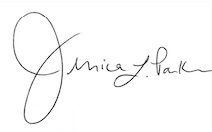How to Write a Clear Research Problem Statement
Scroll to the bottom of this page to get your free worksheet on how to write a research problem statement.
I have a saying that “the problem statement is the 'North Star' guiding a research proposal.” A well-defined problem statement is crucial for outlining the issue at hand and honing the research focus. We frequently encounter scholars grappling with conceptualizing their research or struggling with alignment issues in their writing. More often than not, these challenges stem from a poorly defined problem statement.
Once we refine the problem statement, everything else falls neatly into place. So, let's start at the beginning.
Decoding the Research Problem Statement
At its core, a problem statement outlines the issue that the research aims to address. However, it's more nuanced than that. A compelling problem statement encompasses specific aspects of the research. Bloomberg and Volpe (2008) suggest that a well-crafted problem statement should:
Summarize the literature substantiating the study,
Highlight the need for the study in the context of an identified literature gap,
Describe the problem to be investigated and set boundaries, and
Position the study within a broader context.
While this may sound straightforward, crafting a research problem statement can be daunting. It demands a high level of focus to distill complex thoughts into a succinct paragraph. It's not a task to be rushed in a busy afternoon between work and family commitments. Conceptualizing your research requires a calm and focused mindset.
Many researchers juggle thoughts about school, work, and personal life, which can be overwhelming. That's why we incorporate a wellness component in our approach to supporting writers and researchers.
Even experienced writers can stumble over the process of refining and organizing their ideas. If your thoughts about your research feel scattered, stay tuned for my upcoming post on organizing your mind. It will provide steps to cultivate the calm and focus needed to approach your research systematically.
When you're ready, let's dive into creating a mind map.
Constructing a Mind Map
For this exercise, consider investing in a whiteboard or using a mind-mapping software of your choice.
Begin by creating column headings for each key element of your problem statement (i.e., literature summary, need for the study, problem to be investigated, and broader context). Assign a different color to each column.
Next, populate the columns with relevant information for each element. At this stage, don't worry about including too much information.
Then, review the columns for repetition and overlap. If an item appears in two columns, decide where it fits best and remove it from the other column. Look for opportunities to combine statements or ideas and eliminate repeated information.
Here are two other ways you can visualize your mind map:
A clear visual representation of your thoughts enables easier management. Once your columns are filled, further refine your information by removing unnecessary details. Often, these are the points that helped you reach your main ideas but are no longer needed once your thoughts are clearer.
With your thoughts consolidated and organized, you can start writing your problem statement. Use the colors you assigned to each element to ensure your writing remains focused and covers each aspect. Draw information from the appropriate columns to avoid repetition or confusion.
By using a mind map to organize your ideas from the relevant literature, you can develop a robust problem statement that serves as the bedrock for your entire research project. You'll have found your North Star!
Source: Bloomberg, L. D., & Volpe, M. (2008). Completing your qualitative dissertation: A roadmap from beginning to end. SAGE Publications, Inc. https://www.doi.org/10.4135/9781452226613
Get Your Free
Problem Statement Worksheet
This free worksheet will help you easily collect the information you need to begin your mind mapping exercise and write your problem statement. Submit the form below to download the worksheet.



